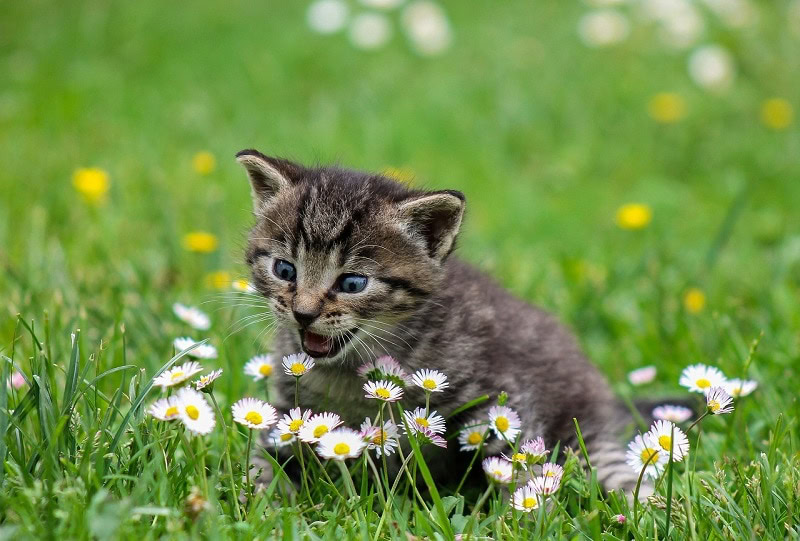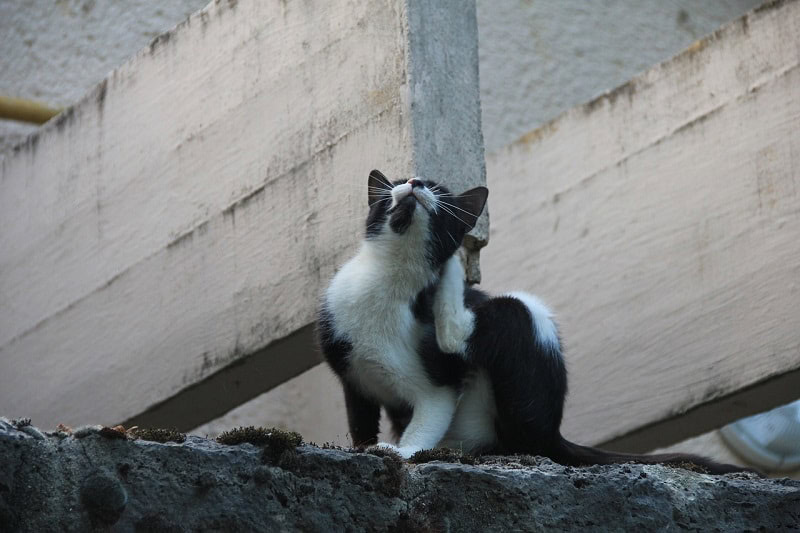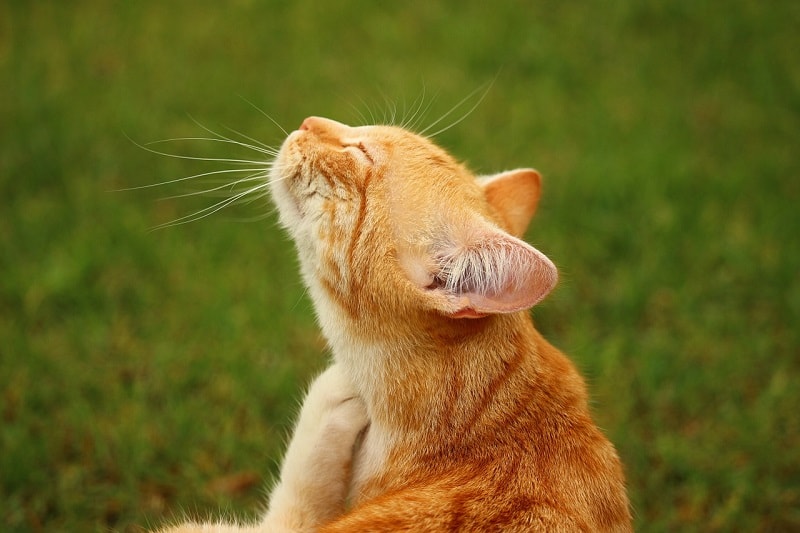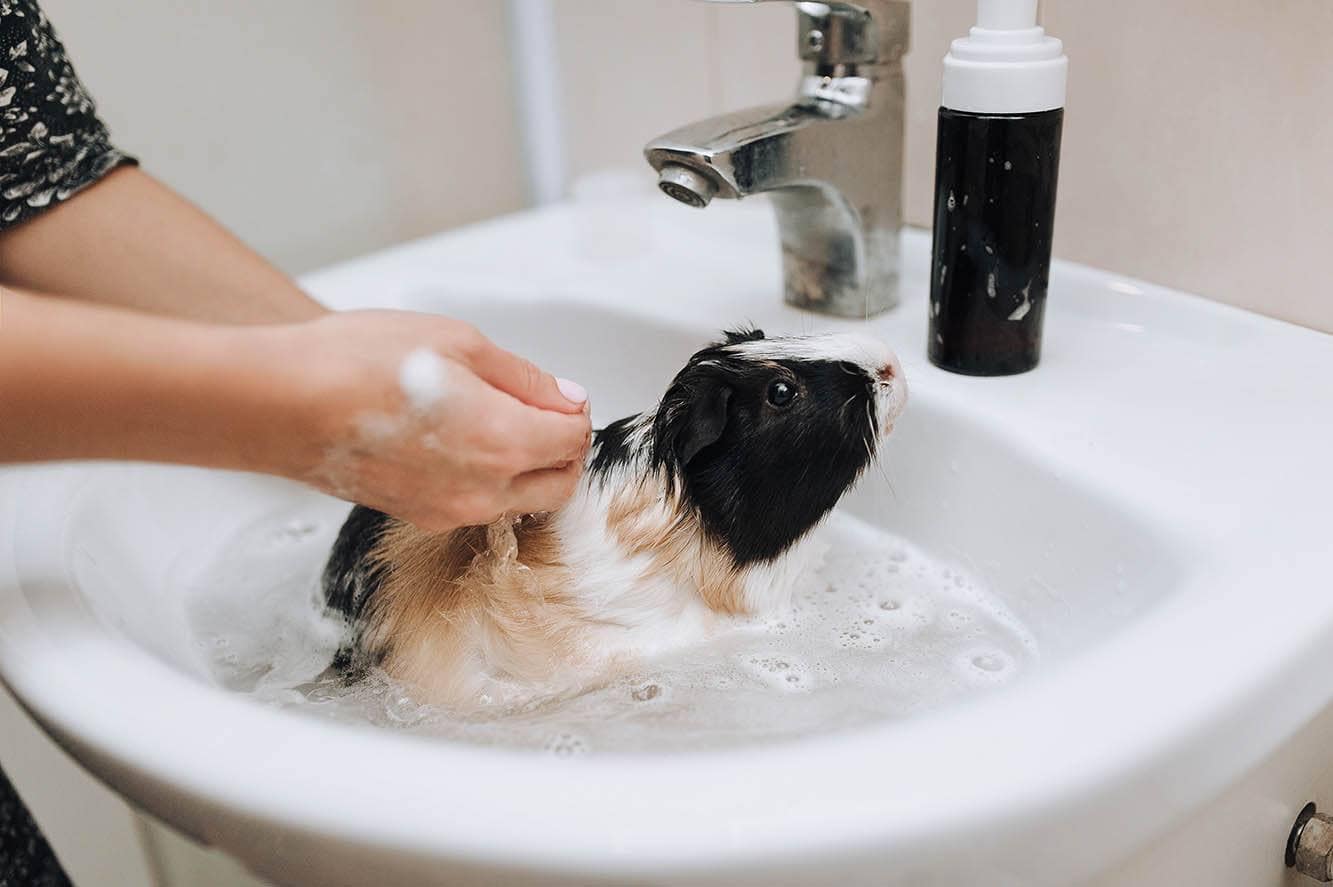VET APPROVED

The information is current and up-to-date in accordance with the latest veterinarian research.
Learn more »Click to Skip Ahead
Cat allergies are similar to human allergies. They occur when your cat comes into contact with an allergen, usually a protein, and the immune system overreacts, thinking it is a harmful substance. In cats, this most commonly leads to signs of itchiness and secondary skin irritation, although in some cats, it may cause respiratory or digestive signs.
Allergies can form at any time in a cat’s life, and nobody is entirely sure exactly why or how they develop. Treatments greatly depend on the diagnosis and, if possible, focus on the avoidance of any known allergens, as well as implementing food trials and hypoallergenic diets, using corticosteroids and other immunosuppressants, antihistamines, and allergen-specific immunotherapy.
Below are some of the most common cat allergies, as well as allergy signs and possible treatments.

What Is Feline Atopic Syndrome?
Feline atopic syndrome (FAS) is a new term encompassing all kinds of allergic conditions in cats that may affect the skin, gastrointestinal, and respiratory tract.1 These disorders include allergic dermatitis or allergic skin disease, asthma/respiratory disease, and gastrointestinal disease that may result from environmental or food allergies. A cat may suffer from more than one allergic condition at a time, such as a flea allergy dermatitis, and a food allergy.
Allergic dermatitis is the most commonly encountered type of feline allergy manifestation that causes excessive itchiness and skin lesions. There are several possible causes for it, from flea allergy dermatitis (FAD) and feline atopic skin syndrome (FASS), which is induced by environmental allergens such as dust mites, pollens, grasses, and molds.2 Let’s get into some of these in more detail, but this list is not exhaustive of all potential allergens in cats.
This article focuses on the most common allergies in cats, such as flea allergy dermatitis and environmental and food allergies, while feline asthma is a separate topic.
Flea Allergy Dermatitis (FAD)
Flea allergies are unfortunately common in cats and are caused by the excessive reaction of the immune system to the proteins in flea saliva when a flea bites your cat to feed on their blood. Some of the flea’s saliva is injected into the skin, and the protein it contains causes an allergic reaction. A single flea can be enough to cause a severe reaction in cats suffering from flea allergy dermatitis.
Your vet will prescribe the appropriate flea treatment for your cat, as well as medications to reduce the itch and inflammation associated with flea bites. Flea allergies can be a real blight for your cat, and you should take action quickly to prevent challenging skin lesions and hair loss inflicted by your cat through scratching and biting their skin.

The 3 Most Common Environmental Cat Allergens

Environmental allergens are those present in the cat’s surrounding environment, such as pollen, grasses, mold, or dust mites, most often leading to feline atopic skin syndrome. The signs of skin disease sometimes occur seasonally, or they can be present during the whole year, depending on the culprit. In humans, this is what we often refer to as hay fever, while cats present with excessive itchiness of the skin.
These allergens can be quite challenging to identify, which often makes the diagnosis one of exclusion after all the other common culprits have been ruled out and certain diagnostic criteria have been met.
After a diagnosis has been suspected and confirmed, your vet will prescribe adequate medication to help suppress the itching while managing any present skin lesions. They may use antihistamines, corticosteroids, other immunosuppressants, and sometimes even antibiotics if there is a skin infection. They may also recommend immunotherapy, for which your cat may need a referral to a veterinary dermatologist for intradermal skin testing or blood testing.
Some common allergen examples to look out for include:
1. Tree, Grass and Weed Pollen
Pollen, or seasonal allergies, are similar to hay fever in humans because they are caused by pollen from plants and grass.
However, pollen allergies in cats differ in the signs. While humans develop a runny nose and watery eyes and may start sneezing and coughing, cats will usually develop something previously known as atopic dermatitis or atopy, which means that their skin will become itchy, and they may develop various skin lesions and hair loss due to scratching and biting themselves.
2. Mold and Mildew
Mold and its spores are present everywhere in the environment. These microscopic fungi can thrive on any organic matter and are often found on the ceilings, walls, and floors of homes with moisture problems. Mildew refers to certain kinds of mold or fungus and flat mold growth, often found on shower walls, windowsills, and other places where moisture levels are high.
Mold can form on almost any surface and is sometimes found on pet food, especially dry food kept in sheds and damp pantries.
Look for the source of the mold. Check their food source because even if it isn’t kept in the shed, it can still become moldy. Look in areas where your cat enjoys relaxing, and don’t forget to include outdoor areas in your search.
Signs attributable to mold and mildew allergies generally involve skin itchiness, although in some cases, they can also cause respiratory irritation.

3. Dust Mites
Dust allergies are common in people and can also be found in cats and dogs. There are several house dust mite allergens, classified as Der p or Der f based on the mite species, and many allergen groups, with several of them often found in cats’ sleeping and resting areas. Exposure to these proteins through inhalation can also lead to respiratory problems in some cats, including coughing and wheezing or feline asthma, while more commonly, it causes skin complaints and itchiness.
Cats that enjoy sleeping in basements and attics, homes without central air conditioning, or those with more than 50% carpets may increase the presence of dust mites and will require that you carefully clean your home more often. You may even need a special vacuum, as carpets can be large reservoirs of house dust mites.

Contact Allergies
Contact allergies are not that common in cats, and it can sometimes be difficult to establish what may have caused the allergic reaction. It could be anything like their flea collar, bedding, clothes, or a pet shampoo. When these substances come in contact with the skin, they will cause a local reaction, such as itchiness, redness, and inflammation. As soon as they are removed from the cat’s skin, the reaction will subside.
Most Common Food Allergens
Like people, cats can be allergic to certain food proteins, and food allergies can also be present alongside flea and environmental allergies in some felines. If your cat suffers from a food allergy, your vet will recommend an elimination diet to specifically identify the proteins that your cat is allergic to.
An elimination diet includes a novel animal protein, such as venison or buffalo, and is started for a period of at least 8 weeks to see if the signs of allergy resolve or reduce. It is worth noting that if signs persist, it is possible that your cat is allergic to something else that is common in both the previous and the new food, or they may even be allergic to more than one common ingredient.
Instead of choosing a novel protein that the cat has never eaten before, which may sometimes prove challenging, there are also veterinary-formulated hydrolyzed diets, where the protein molecules are broken down so the immune system cannot recognize them.
1. Beef
Beef is one of the most common food allergens today. If your cat is allergic to beef, they should not be eating any homemade or commercial diets that contain beef.

2. Dairy
Many cats are lactose intolerant, which differs from a food allergy as it doesn’t involve the immune system. It causes digestive signs such as flatulence, vomiting, abdominal pain, or diarrhea, as most adult cats no longer have the necessary enzyme called lactase, to be able to properly digest lactose from milk and dairy products.
Allergies to dairy proteins, such as cheese and milk, on the other hand, usually cause skin inflammation and itchiness, while some cats may also develop gastrointestinal signs. Avoidance is the best cure for this particular allergy, as well as for lactose intolerance, and there is no reason to feed cats dairy products.

3. Fish
Some cats may also have an allergy to fish protein, and if a commercial cat food contains fish ingredients or fish oil, they may need a novel protein or a hypoallergenic diet instead.
4. Chicken
Chicken, turkey, and other poultry are common ingredients in commercial cat food, and some cats may be allergic to one or more poultry proteins.

Conclusion
Cats commonly suffer from flea allergy dermatitis, environmental allergies, or food allergies.
Regardless of the allergen, cats tend to show skin signs like itchy and irritated skin, while respiratory and gastrointestinal manifestations are less common.
Consult your veterinarian if you suspect your cat is suffering from allergies. They will try to identify specific allergens and prescribe adequate treatments to relieve the cat’s signs.
Related reads:
- 8 Home Remedies for Treating Ringworm in Cats
- Antihistamines For Your Cats Allergies: 5 Vet-Reviewed Options (Update)
Featured Image Credit: rihaij, Pixabay












